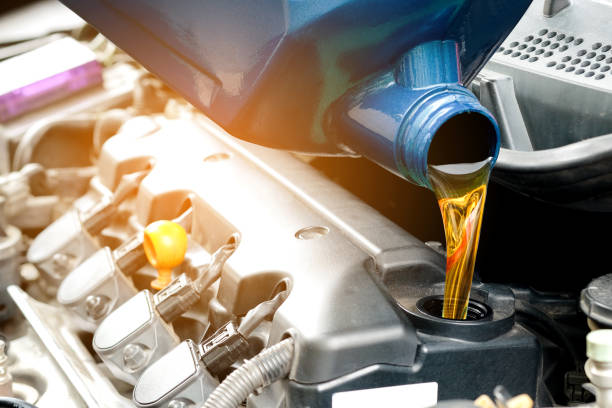May 5, 2024
What is the best level of oil in a car?
The best oil level for a car is typically between the “MIN” and “MAX” marks on the dipstick. Here are some guidelines to ensure your car’s oil level is optimal:
- Check Regularly: Check your oil level regularly, at least once a month.
- Engine Off and Cool: Check the oil level when the engine is off and cool for the most accurate reading.
- Dipstick Reading: Pull out the dipstick, wipe it clean, reinsert it fully, and then pull it out again to check the level. The oil should be between the “MIN” and “MAX” marks.
- Top Up if Low: If the oil level is below the “MIN” mark, add oil until it reaches the proper level. Be careful not to overfill.
- Quality Oil: Use the oil grade recommended by your vehicle’s manufacturer.
Keeping the oil at the proper level ensures the engine is well-lubricated and runs smoothly, preventing potential damage.
How much oil does a car need?
The amount of oil a car needs depends on the make, model, and engine size. Here are some general guidelines:
- Small Cars: Typically require about 4-5 quarts of oil.
- Midsize Cars and SUVs: Usually need around 5-6 quarts of oil.
- Large Vehicles and Trucks: Often need between 6-8 quarts of oil.
- High-Performance and Diesel Engines: Can require more oil, sometimes 8 quarts or more.
To find the exact amount of oil your car needs, consult the owner’s manual or check the manufacturer’s specifications. Always ensure to use the recommended oil type and grade for optimal performance.

What is ideal car oil pressure?
The ideal oil pressure for a car can vary depending on the engine and manufacturer specifications, but here are some general guidelines:
- Idle Oil Pressure: When the engine is idling, oil pressure should typically be between 20 to 30 psi (pounds per square inch).
- Operating Oil Pressure: When driving at normal operating speeds, oil pressure usually ranges from 40 to 60 psi.
- Manufacturer Specifications: Always refer to the vehicle’s owner manual for the exact oil pressure specifications as they can vary by make and model.
Factors Affecting Oil Pressure:
- Oil Viscosity: Using the correct oil viscosity recommended by the manufacturer is crucial for maintaining proper oil pressure.
- Engine Temperature: Oil pressure can vary with engine temperature. Cold oil tends to be thicker and may result in higher pressure, while hot oil is thinner and might lead to lower pressure.
- Engine Condition: Worn engine components can affect oil pressure. Regular maintenance helps in maintaining optimal pressure levels.
Monitoring Oil Pressure:
- Oil Pressure Gauge: Many vehicles are equipped with an oil pressure gauge. Regularly monitor it to ensure pressure remains within the recommended range.
- Warning Lights: Pay attention to any oil pressure warning lights on the dashboard, as they indicate a potential issue that needs immediate attention.
Maintaining the correct oil pressure is crucial for the engine’s health, ensuring proper lubrication and preventing damage.
